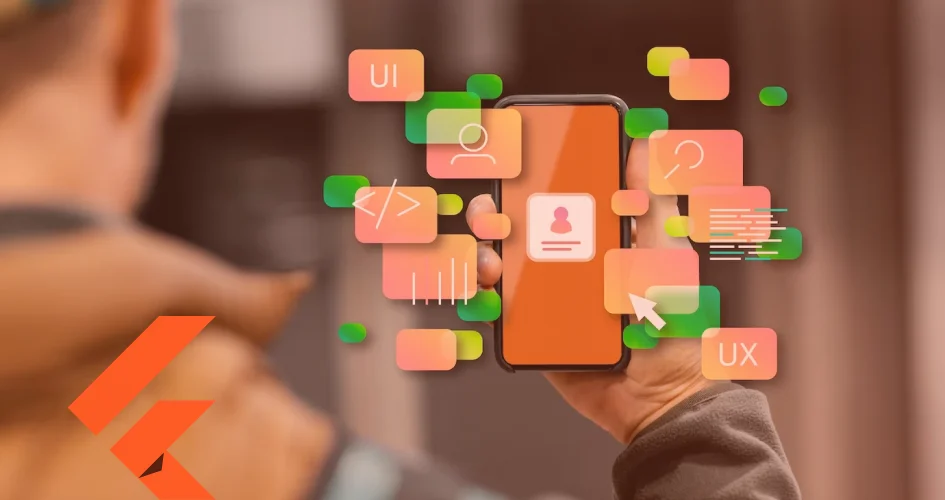Introduction
Mobile apps are everywhere from waking up to planning for the next day we rely on various apps to make our lives easier and more effective.
People love to use apps that have smooth user experience, optimal performance, and are trendy.
Enterprises and startups love to develop their apps cost-effective and faster.
That’s how Flutter gains popularity within a few years of its release.
You can create apps with a native-like experience with less time and budget.
Because of this, Flutter mobile app development services are increasing worldwide, and startups to large companies like BMW and Alibaba are using it.
There are more than 5 million apps on Google Play Store and Apple’s App Store combined. Apps need to stand out in the crowd to win the competition.
Let’s see how Flutter helps to stand out in the competition and helps startups or enterprises to build faster and more scalable MVPs.
Let’s dive in!
Let Intelivita’s Flutter app development experts take your app to the next level of innovation.
Sign up for a free consultation with us to transform your Flutter app into a digital masterpiece.
What is Flutter?
Flutter is an open-source UI software development kit introduced by Google in 2018.
Since its release, it gained popularity for its cross-platform app development ability.
Flutter includes engine rendering, APIs for testing and integrating, and easy-to-use widgets that make it easy to develop an app from scratch.
It supports hot reloading which helps developers to see the changes in real-time when there is a modification in the codes.
According to the statistics, in 2021, more than 42% of developers prefer to use Flutter for cross-platform app development.
Flutter is a great choice for developers who want to build cross-platform, high-quality applications within less time without sacrificing performance or user experience.
10 Reasons Why Flutter Is the New Development Trend for 2024
Since its initial release, Flutter took the app development industry by storm.
Each new update makes the platform more powerful and versatile, allowing developers to build more engaging apps with greater performance.
Looking towards the future, Flutter is poised to become the go-to cross-platform framework for app developers.
Let’s see what makes Flutter a new development trend.
Keep reading to find out!
It’s Perfect for MVPs
Every startups or organization prefer MVPs to validate their idea with minimal risk.
Typically MVPs are built with minimal resources like lesser time, minimal cost and effort.
Using Flutter, developers are able to build native apps with minimal functionality, which enables them to easily validate their business ideas.
Due to its single codebase framework, Flutter can be used on both iOS and Android devices, making it easy and reliable to estimate the capital cost or feasibility of your idea without having to write the whole code again.
This, in turn, saves you time and resources.
A startup or a organization can use the Flutter framework to validate their idea through MVPs, which require minimal effort and time.
Flutter meets all the performance and functional requirements, making it an excellent choice for developing MVPs.
Own Rendering Engine
Since mobile app development is evolving at an ever-increasing rate, startups are finding ways to streamline their processes and reduce costs.
One of the key aspects of this is efficient app rendering.
Unlike many other frameworks, Flutter has a built-in rendering engine called Skia.
With this developers can save time and money by not integrating a separate rendering engine into their app design.
Skia is found in both chrome and Firefox. In addition to being hardware-accelerated, Skia also uses OpenGL ES to render, making it more efficient and faster.
Faster Development
Some of the common barriers in app development are code complexity, challenging debugging, complicated UI/UX, and app security, among others.
When using Flutter, you can easily overcome these barriers.
With Flutter, you can create apps for multiple platforms using a single code base.
Its hot reloading feature saves a lot of time required to test apps if they were written in different languages.
The simple and efficient development process employed by Flutter is the inner desire of many developers who want to step out of complicated programming infrastructure.
This framework delivers the app in a shorter time, which will undoubtedly surprise your client.
Even if you’re willing to run your startup, Flutter can save you more time to plan more insights and future goals for your business.
With Flutter, you can focus more on the big picture and less on the nitty-gritty of coding.
Advanced APIs
When it comes to app failure, many apps fail due to a lack of user experience throughout the app.
Every user prefers to have an enhanced user experience.
Flutter supports advanced APIs to build apps with better user experience.
HTTP and REST are advanced APIs that aid developers in building smooth and outstanding animations, and Flutter supports both.
With these APIs, developers can create more complex and dynamic features within their apps, such as interactive data exchange with external resources.
These APIs make it easier for developers to enhance the overall look and feel of their apps, which is a crucial factor in user satisfaction.
Write Once Approach
Flutter frameworks are unique because they enable developers to write code that works across a wide range of mobile devices.
It is possible, however, for Flutter app developers to deploy their apps to Android and iOS platforms using the same codebase.
Using the “Write Once, Run Anywhere” methodology has several advantages:
- Enhancing the speed of production
- Improving the performance of the entire app
- Creating apps that are more efficient on mobile devices
- Achieving a seamless app design
- Keeping the number of errors caused by duplicate code to a minimum.
Native Like Performance
If your mobile application doesn’t meet the expectations of the end user, they will delete the app.
Unlike other cross-app development networks, Flutter apps give you the experience of native apps while using them.
In contrast to other cross-platform apps, Flutter is built with Dart Programming Language and uses AOT (Ahead-Of-Time) compiler to interpret the app code.
Using AOT, the code is compiled in binary format and executed directly on the native platform, which makes the process faster and more engaging.
Rapid Testing with Flutter
Using Flutter as a mobile app development framework requires less testing because there is only one codebase to test.
Flutter apps are easy to test. Testing an application across all platforms is not necessary.
You can initiate automated testing, as it has only a single code for multiple platforms.
There are three types of testing in Flutter:
- Unit testing – To verify the correctness of a feature or function.
- Widget testing – To confirm that the widget works as expected.
- Integration testing – To test the integration of all widgets.
Transparent Documentation
Flutter has an emerging community and can draw a large number of developers to the community in future.
Usually, upcoming technology won’t possess the proper documentation.
But in the case of Flutter, you can find clear and transparent documentation.
This helps developers to build apps with ease.
UI Elements as Widgets
Customizable widgets are one of the main factors contributing to the popularity of Flutter.
Pre-built widgets enable developers to create dynamic and interactive user interfaces effortlessly.
Using widgets in Flutter, you can create dynamic interfaces that update in real-time.
In response to changes in the screen data, the widgets update instantly, simplifying the development and maintenance of applications and making the process more efficient.
Furthermore, widgets in Flutter can be effortlessly customized to meet the design requirements of an application.
There are numerous pre-built widgets available in Flutter, and developers can create their custom widgets as well.
Widgets in Flutter are highly reusable.
Once a widget is developed, it can be used multiple times throughout the application.
This not only saves time during development but also ensures consistency across the application.
The Game Engine
The introduction of a commutable game engine – Flame by Flutter, which offers you the best gaming options, has sparked the growth of the video game industry.
It makes use of the robust framework offered by Flutter while also making the code easier to understand so that you can construct projects.
With it, you can implement a simple yet effective game loop and provide all the functionalities necessary to create a game.
Like – Input, images, sprite sheets, animations, collision detection, and a component system that we call Flame Component System are all included in it.
Flame offers stand-alone packages that extend Flame’s capabilities:
- Using the “audioplayers” package, flame_audio provides audio capabilities.
- With flame_forge2d, you can add physics using a Box2D port called Forge2D.
- The flame_tiled package integrates with tiled.
- The parts are all independent and customizable, so you can pick and choose what you want.
Flame Game Engine features:
- Game loop
- FCS – component/object system.
- Particles and effects.
- Detection of collisions.
- Support for gestures and inputs.
- A collection of images, animations, sprites, and sprite sheets.
What Changes Can We Expect from Flutter In 2024?
With every update, Flutter is evolving, and the number of developers adopting and learning Flutter is also increasing rapidly.
It’s possible for Flutter to replace the current native app development anytime, as the team is working on new and improved packages alongside Flutter’s base.
Moreover, Flutter doesn’t have restrictions like native platforms, as it allows the integration of native codebases.
However, this requires customized code that should be written by someone who knows Java and C.
In 2024, new technologies and platforms are expected to dominate the mobile trend, with Flutter leading the way in fast, UI-centered, and optimized app development.
The combination of Augmented Reality and Machine Learning with cross-platform development will continue to lead to seamless user experiences across all devices and browsers.
You can expect the following changes in the upcoming updates:
- Flutter for web app development.
- Flutter for desktop app development.
- Flutter for embedded.
Conclusion
Flutter is a trending framework in the world of developers, offering many features that other cross-platform frameworks lack.
In 2024, Flutter development is the best toolkit for startups, as well as famous companies.
All the features and capabilities mentioned above prove that Flutter is a game-changer.
Due to its extensibility, code reusability, design-specific UI elements, and cost-effective cross-platform development capabilities, mobile app developers and development companies are embracing Google’s framework.
With more enhancements on the way, we may see Flutter ruling the mobile app development market soon.
With Flutter, you can develop mobile apps in less time, with a minimum budget and fewer resources.
If you’re looking to build your app with Flutter, find out how much it will cost to develop an app in Flutter.


![Flutter UI/UX Design [Everything You Need to Know for 2024]](https://www.intelivita.com/wp-content/uploads/2023/12/UX-Design-Everything-You-Need-to-Know-for-2024.webp)


